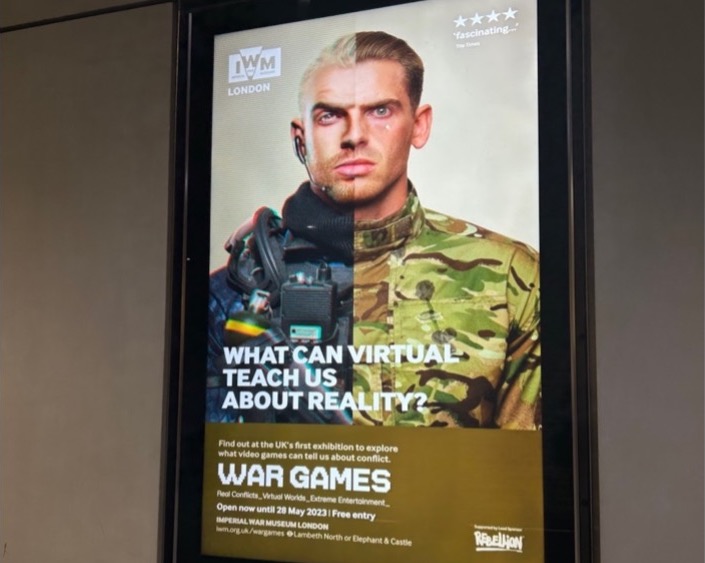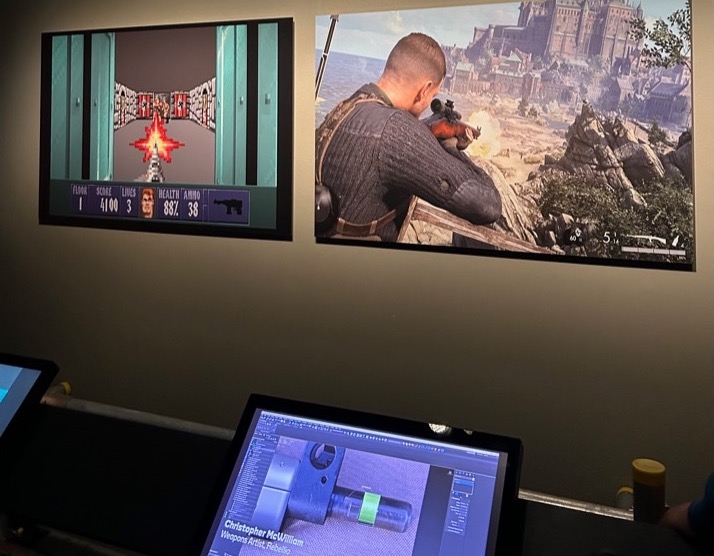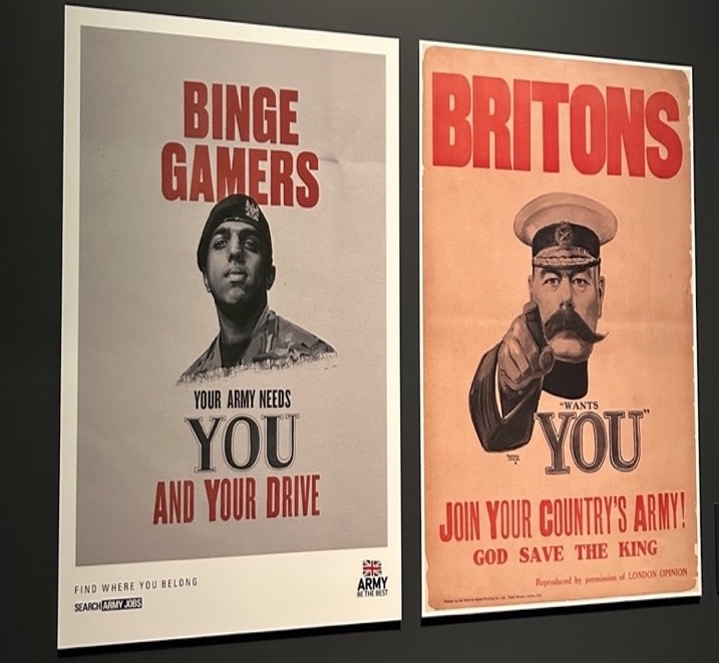
After seeing this intriguing advertisement in London Bridge station, I decided to pay a visit to War Gaming exhibition at the Imperial War Museum. War Gaming is UK’s first exhibition to explore war games and question how the realities of war are represented in the virtual world of video games.
Full of immersive installations and perspectives from industry experts, the exhibition grapples with war games from the last forty years and looks at the way they portray the conflicts that come to shape our world. The exhibition examines popular shooter games such as Call of Duty as well as more obscure titles like ‘Bury me, my love’, a mobile game played entirely through text messages, that tells the story of a Syrian refugee hoping to reach safety in Europe.
The exhibition noted how over half of the adult population in the UK play video games regularly. In fact, UK gamers spent a record £7.1 billion pounds in 2021. This is more than was spent on music and cinema combined! This tells us is that gaming is one of the most powerful mediums of storytelling in the modern age. With first person shooter games being amongst the most popular genre, war games make up a significant chunk of the industry. The crossover between war games and reality is ever-growing alongside technological advances. Militaries all over the world are using the virtual world to their advantage in numerous ways. For example, there is an Xbox controller on display on the exhibition that was used to operate cameras on a drone (The Desert Hawk UAV) in Iraq and Afghanistan. Virtual reality is also being used as a mechanism to recruit new troops.

VIDEO GAMES AND IMMERSIVE EXPERIENCES
Video games and immersive experiences are distinct from other cultural forms. Films and novels, for example, aim to present a certain perspective onto the reader or viewer.
Whereas video games and immersive experiences are focused primarily around a participatory element. They are designed to make you feel as though you are actively engaged in the story. Video games and immersive experiences have the ability to connect us to the story in a way that other forms of media can’t.
The exhibition details how video games, much like immersive experiences, give us the opportunity to assume roles and characters far removed from our daily lives. They aim to encapsulate all of our senses and conjure up the feeling of being transported into a completely different time and place. Every detail is carefully thought through to ensure the environment and everything in it appears as close to reality as possible. Sound effects and landscapes help to fill our senses, building new worlds around us. These worlds can be fantastical, but also can replicate real life so closely that they have the ability to take us beyond a purely digital entertainment experience.
To ensure war games are as rich and believable as possible, developers consult lots of people with real world experience of conflict. As a result, the violence we see on-screen can uncomfortably reflect a brutal reality. War games have the unique ability to turn the extremely harrowing and horrific experiences of war into a form of casual entertainment.
Leaving the exhibition, I was left thinking about war games and their ability to shape our perception of real-world conflicts.

Do war games glamourise war and anaesthetise us to violence?
I found it hard to draw a conclusive answer to this question. This is because as a modern-day society, we have become more and more desensitised to violence and the horrors of war. If we were only ever exposed to real world conflicts through the way they are represented to us in games, it may be easier to answer such a question. However, the sad reality is that, every time we turn the news on or scroll through social media, we are shown the most distressing images of war and as a result we have become numb.
You can click here to donate to War Child and your donation will go towards helping children in Ukraine, Yemen and Afghanistan who are growing up surrounded by real conflict and violence.
This interactive exhibition is free to visit until the 28th May.
Photo by Daniel Stuben. on Unsplash
Ami Sanders, Account Executive



